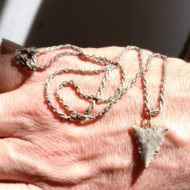I’ve had more insight into the ideas, or some of the ideas, relating to validating arts practice. More and more artists are turning out to practice as conceptual artists. Believing that an arts practice finds valid expression by its engagement in social fields. The social fields have always been inflected by even purely elite arts practices. They shocked at one time and prior to that they validated. The practices rather than the arts themselves. Perhaps there are situations where the practice of art, understood to be its physical manifestation as a “work”, might be its proxy. We are in a time when it’s not at all clear how to intervene in the social spheres as a visual or other practical manifestant of the arts. So it’s a matter of finding a place where arts become genuinely innovative. Not purely repetitious, that being a significant feature of popular arts.
The day I just spent with the polytechnic in Middlesbrough gave me a clearer overview of an arts practice that does things with people rather than makes anything. At one level there is the need to practically evaluate what people are doing in order to allow for training, the guidance that the polytechnic offers, a sense of value, validation of the artist, fiscal support for the artist in what they are doing. This was brought home I think by meeting the ex-head of art at Sunderland University. I saw that from her perspective validation was a practical and pragmatic moment. At another level there is this significant dialogue around art practice – in order perhaps to have validation – needing to bring about material change, to materialise some sort of socially desirable change if the “the work” is not itself appreciated as a material expression of socially desirable change. “The work” to be of value had to push forward social situations of which it was not the immediate product. It had to be so precise in its shape and yet so vague, so malleable, that it could map itself, or be mapped through its precision, on to many many situations. If the work is no longer produced then it is the quality and effectiveness of the social moments effected by the artist that are to be validated.
This came to view with my visits to MIMA (the Middlesbrough Institute Of Modern Art). We were there to meet the director, a reasonably well-known artist whose name I can’t recall and refuse to search for with Google right now, who had gained some notoriety through involvement in the sort of social arts engagement project/life in a village somewhere in the Lake District. Ideas derived from Ruskin which is of course most appropriate to those of us coming out of the polytechnic.
The critique as he said of his social-arts-community-practice-life was that it was “easy” to do that in a small rural community – how applicable would it be in a complex environment. That was where he found himself at MIMA. Multi-million pound arthouse set over three stories with huge storerooms at the back, a grand entrance, huge open foyer, cafe, modern art-house book sales, well crafted crafts. The building is some great more than ever modernist statement that sits just to the side of the streets where constant expression is taking place amongst the people of Middlesbrough: the shopping streets and covered shopping centres. That’s where everybody was and when I asked them about MIMA they said they’d either never heard of it or at most had been there once.
The challenge of the great scale Ruskinian practice is to breathe life into MIMA and to validate itself indeed.
The old galleries of the mid to late nineteenth century attracted attention partly because of their ability to entertain, to fascinate. Places like MIMA don’t offer that in and of themselves unless they bring with them the things that were brought with the first phase of galleries: money and status. So the more than modernist approach of the large-scale Ruskinian practitioner must always be to include elements of fame, hopefully of notoriety.
